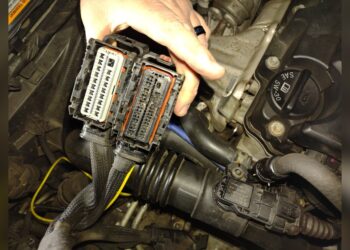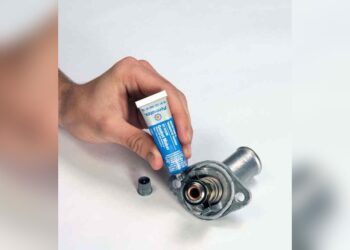If your car won’t start after changing spark plugs, the issue may be with the installation or related components. Ensure that the plugs are properly gapped and seated, and that wires are connected correctly.
Encountering starting problems right after changing spark plugs can be frustrating. It’s an issue that can arise from a simple oversight or a deeper electrical problem. Spark plugs are vital for engine ignition, and any misstep in their replacement can lead to starting difficulties.
This introduction sets the stage for a troubleshooting guide aimed at car owners who have just replaced their spark plugs and are facing the perplexing situation of a non-starting engine. By focusing on common mistakes and quick fixes, this article promises practical advice that helps readers diagnose and resolve their car troubles efficiently. With clear, concise language and a focus on actionable steps, we’ll explore the potential reasons behind this common automotive hiccup.

Credit: m.youtube.com
Introduction To Spark Plug Replacement Issues
Replacing spark plugs is a common car maintenance task. It seems straightforward, but sometimes, a car won’t start afterward. Understanding why this happens is crucial.
Spark plugs are key to a smooth-running engine. They ignite the fuel-air mixture in your car’s engine. This ignition gives your car the power it needs to run. If they’re not working properly, your car might not start.
The Role Of Spark Plugs In Engine Performance
Spark plugs have a big job in the engine. They create the spark that ignites the fuel. This spark is necessary for the engine to work. If the spark plugs are old or installed wrong, your car might not start. It’s important to fix spark plug issues fast.
Common Myths About Spark Plug Maintenance
- Myth: Spark plugs don’t need regular checks.
- Truth: Regular checks are important for car health.
- Myth: All spark plugs are the same.
- Truth: Cars need the right type of spark plug.
- Myth: Tighter is better when installing spark plugs.
- Truth: Over-tightening can damage the engine.

Credit: www.reddit.com
Symptoms Of Improper Spark Plug Installation
Changing spark plugs seems easy. But, doing it wrong can cause problems. Here, we talk about symptoms of improper spark plug installation. These signs help you spot mistakes early.
Engine Misfires And Rough Idling
Engine misfires happen when your car’s engine skips a beat. It feels like a sudden jerk or pause when you drive. This is a clear sign of bad spark plug installation. Rough idling is another symptom. Your car will shake or vibrate more than usual when it’s running but not moving. Both signs mean the spark plugs may not fit right or are connected poorly.
- Car jerks while driving
- Engine vibrates when idle
- Unexpected engine sounds
Unexpected Decrease In Fuel Efficiency
A sudden drop in fuel efficiency can surprise you. If your car uses more fuel than before, check the spark plugs. Wrong installation can make the engine work harder. This uses more fuel. Keeping an eye on your fuel gauge can help spot this problem early.
| Before | After |
|---|---|
| Normal fuel usage | High fuel usage |
Remember, these symptoms mean you should check your spark plugs. Doing so can save your engine and your wallet.
Troubleshooting The No-start Problem
Is your car refusing to start after a spark plug change? It’s a frustrating issue, but don’t worry. With some simple troubleshooting steps, we can figure out the problem and get your car running smoothly again.
Initial Checks: Battery And Connections
First, ensure your car’s battery is in good shape. A weak or dead battery could be the culprit. Check the following:
- Battery voltage: It should read around 12.6 volts.
- Corrosion: Look for white or greenish buildup on the terminals.
- Connections: Make sure cables are tight and secure.
Verifying Spark Plug Gaps And Installation
Incorrect spark plug gaps can prevent your car from starting. Here’s what to check:
- Correct gap: Use a gap gauge to ensure proper spacing.
- Installation: Spark plugs should be snug, not overtightened.
If gaps are off, adjust them carefully. Make sure all spark plugs are properly seated.
Evaluating Spark Plug Conditions
Regular checks on spark plugs keep engines running smoothly. Knowing how to spot bad spark plugs is key. Spark plug condition can tell much about engine health. Let’s learn to identify issues early.
Signs Of Fouled Or Damaged Spark Plugs
Fouled or damaged spark plugs cause starting troubles. Look for these signs:
- Engine misfires often.
- Car struggles to accelerate.
- Fuel economy drops.
- Exhaust emits black smoke.
- Engine idles roughly.
The Importance Of Choosing The Right Spark Plug
Correct spark plug choice is critical. It ensures optimal performance and prevents damage. Factors include:
| Feature | Importance |
|---|---|
| Material | Matches engine requirements. |
| Size | Fits correctly. |
| Heat range | Suits engine temperature. |
| Gap size | Affects spark quality. |
Always choose manufacturer-recommended spark plugs. This avoids engine problems.
Quick Fixes For Starting Issues
Quick Fixes for Starting Issues can save your day. Your car won’t start after changing spark plugs? Don’t worry. Here are some steps to get it running smoothly again.
Rechecking Spark Plug Wires And Connections
First, ensure everything is connected right. A loose spark plug wire can cause trouble. Here’s how:
- Turn off your car.
- Check each spark plug wire.
- Make sure they’re firmly attached to the plugs.
- Look for any damage on the wires.
Correct connections help avoid starting issues.
Resetting The Ecu To Resolve Misfires
Resetting the ECU can fix misfires. Here’s a simple guide:
- Disconnect the battery.
- Wait for 15 minutes.
- Reconnect the battery.
This process resets your car’s system. It often fixes the issue.
When To Seek Professional Help
Experiencing car troubles after changing spark plugs can be frustrating. Professional help may be necessary when DIY solutions fall short. Recognizing the right time to seek expert assistance is crucial to prevent further damage to your vehicle.
Persistent Starting Problems After Diy Fixes
If your car won’t start despite new spark plugs, it’s a sign to stop and reassess. Persistent issues indicate deeper problems that require technical expertise. Continuing DIY attempts might do more harm than good.
Benefits Of Professional Diagnostic Tools
Technicians use advanced diagnostic tools to uncover hidden issues. These tools provide precise insights into your car’s condition. They save time and ensure accurate repairs, getting you back on the road safely.
Preventive Measures For Future
Car trouble can be frustrating, especially after recent maintenance. Your car not starting after changing spark plugs may have you puzzled. To ensure this doesn’t happen again, consider these preventive measures for the future.
Regular Maintenance Schedule For Spark Plugs
Spark plugs need regular checks to prevent car start issues. Follow these steps:
- Check your manual: Find the recommended spark plug change interval.
- Visual inspection: Look for wear or damage every few months.
- Performance checks: Note any changes in engine performance.
- Professional service: Have a mechanic check your spark plugs yearly.
The Impact Of Engine Health On Spark Plug Life
Engine condition affects spark plug longevity. Keep your engine healthy:
- Regular oil changes: Clean oil protects engine parts.
- Air filter replacement: A clean filter improves engine breathing.
- Use quality fuel: It prevents deposits on spark plugs.
- Address issues quickly: Ignoring small problems leads to bigger ones.
Conclusion: Ensuring Reliable Ignition
Conclusion: Ensuring Reliable Ignition is vital for your car’s performance. After changing spark plugs, you want a smooth start every time. Let’s recap the essentials for maintaining your vehicle’s heartbeat.
Summarizing Key Points On Spark Plug Maintenance
- Check spark plug type: Ensure compatibility with your vehicle.
- Inspect regularly: Look for wear and tear every 30,000 miles.
- Proper gap settings: Use a gap tool for accuracy.
- Apply correct torque: Avoid over-tightening to prevent damage.
- Clean the area: Remove debris before installation.
Final Tips For Avoiding Starting Issues Post-maintenance
- Test battery: Ensure it’s charged and holds power.
- Check connections: Secure all cables and wires.
- Use dielectric grease: Protects against moisture and corrosion.
- Follow the manual: Stick to your car’s specific instructions.
- Seek professional help: If issues persist, consult a mechanic.

Credit: www.reddit.com
Frequently Asked Questions
Why Won’t My Car Start After New Spark Plugs?
After installing new spark plugs, your car might not start if they are incorrectly installed, if there’s a gap issue, or if the ignition wires were disturbed during the process.
Can Spark Plug Change Affect Engine Startup?
Yes, if spark plugs are improperly gapped or damaged during installation, they can prevent the engine from starting or running smoothly.
What To Check If Car Won’t Start With New Plugs?
Check the spark plug connections, ensure they are secure and correctly gapped, and verify that the ignition wires are properly connected to the correct spark plugs.
Could A Car Battery Die From Changing Spark Plugs?
Changing spark plugs shouldn’t drain the battery unless the ignition is left on or electrical components are used without the engine running for an extended period.
How To Diagnose Spark Plug Installation Issues?
To diagnose issues, inspect the spark plugs for correct installation, check for any physical damage, ensure the correct torque, and examine the ignition wires and connections.
Conclusion
Experiencing car trouble after changing spark plugs can be frustrating. Remember, the solution often lies in double-checking your work and ensuring all connections are secure. Seeking professional help is a wise move if problems persist. Keep these tips in mind for a smoother maintenance process and to get your car back on the road quickly.

















